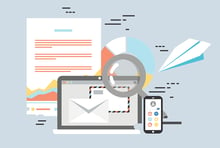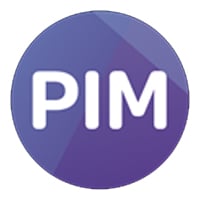Is My Firm Getting the Most Out of Deltek Vantagepoint?
Congratulations for upgrading to Deltek Vantagepoint, the reimagined and greater version of Vision! For starters, you’ve probably already noticed that Vantagepoint is different from Vision in its appearance. This new and greatly improved user interface just scratches the surface though. Did you know that there are several process enhancements designed to streamline your firm’s day-to-day operations?

While Deltek Vision was the gold standard for project-based ERP systems, its successor, Vantagepoint, is raising the benchmark. Check out what you may not know Vantagepoint can do to improve your firm’s processes.
Did you know Deltek Vantagepoint can…?
Did you know you can customize the timesheet approval process?
Do you need one or more approval steps? No problem! Do you need line-item approval? No problem!
Using a Vantagepoint timesheet approval workflow is simple and flexible. Additionally, using an approval workflow tends to shorten the time it takes to get timesheets approved and posted, everything is done electronically either from a desktop or on a mobile device. Timesheet approvals have never been easier!
Did you know that Vantagepoint now allows for draft invoice markup?
Say goodbye to emailing and/or printing draft invoices for approval! With the new “Markup on Draft Invoices” feature, approvers can review, markup and approve directly in Vantagepoint. The draft invoice will show all the information needed for an approver to verify billing. The approver can also use the PDF editor that is built into Vantagepoint so they can make notes right on the draft and resubmit. Waiting days or weeks for invoice approval a thing of the past!
Did you know that you no longer need to post batch transactions?
Have you ever wanted to post one Voucher or one Cash Receipt without creating a whole batch? With Vantagepoint’s new “Single Transaction Posting” option, this is now possible. If this option is enabled, control totals will no longer be needed. As a result, there is no need to leave the transaction entry screen to post, just enter your data and click post. With Vantagepoint, entering and posting transactions has never been this quick and easy!
Did you know that you can have multiple dashboards in Vantagepoint?
Since Project Managers often wear multiple hats in a firm, they can now have different dashboards to represent those different hats. For example, there can be a dashboard for business development activities and pipeline management in addition to a separate dashboard for project financials. Thus, allowing Project Managers or other firm employees that wear multiple hats to have critical decision-making information at their fingertips.
Did you know that information from the project budget and project planning tool are in one view?
In the Project Hub in Vantagepoint, the Project Review option allows project managers to view the Contract Fee, EAC Budgeted Cost, ETC Planned Cost and the Planned Profit in one single view. Additionally, Key Performance Indicators can be tracked on the same view and are continuously tracked and updated as information is changed in the budget and project tool.
Did you know that the professional licenses that your employees hold can be tracked in Deltek Vantagepoint?
For professional services firms, there are often credentials that must be held for some types of work. Examples include professional engineer, professional land surveyor, registered architect, and more. It’s imperative that licenses such as these and other certifications are kept active. Some firms rely on the employees to maintain their licensures while other firms may ask their human resources or marketing teams to capture this information.
Deltek Vantagepoint allows users to capture and track this information in the Credentials grid in the Employee Hub. Available fields cover the credential description, type of credential, license number, state and country, date earned, expiration date, last renewed date, and a check box for proposal use. With the use of workflows, employees can be notified 60 days, 30 days, or another chosen number of days prior to an expiration date.
Did you know that Vantagepoint has a seamless transition process from project pursuit to award?
In Vantagepoint, there are no more mapping exercises after a project is won. You can enter estimates, plans, budgets and contract amounts at any tine in the project lifecycle. As a result, project information is already captured and ready to use at the start of the project.
Get the Most out of Deltek Vantagepoint!
Simplifying and improving your firm’s operations is the intent and purpose of Deltek Vantagepoint. But with anything new, a lot of these enhancements may never be utilized if firms are unaware that they exist. If you’re interested in learning more about the features and tools that are part of Vantagepoint, check out our Vantagepoint video demonstration series. Additionally, make sure to read our monthly newsletter with a new “Did You Know” in each edition.

















 Out of all industries and professional disciplines, architecture, engineering and construction (AEC) leads in innovation. Not just in building design, but in how construction projects are completed. Among other efforts, the AEC industry is embracing modern technology to make projects and overall business more successful. Let’s take a look at some trends.
Out of all industries and professional disciplines, architecture, engineering and construction (AEC) leads in innovation. Not just in building design, but in how construction projects are completed. Among other efforts, the AEC industry is embracing modern technology to make projects and overall business more successful. Let’s take a look at some trends.